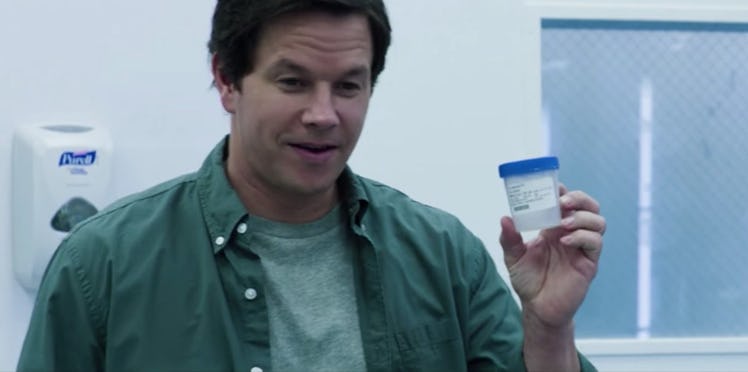What Men Need To Know About Sperm Banks (But Are Afraid To Ask)
If you're thinking about making a deposit. Or a withdrawal.

There are a few reasons you might want to visit a sperm bank: You want to have a kid at a later date; you want to help a couple that can’t conceive on their own; or you need a PS4, but are a little short on cash. Whatever your reason, here is what you need to know before making a deposit (or withdrawal) of genetic material.
Before Heading To The Bank
First, it’s important to understand that it’s not the same as eBay-ing your old Xbox. Sperm donation is a big decision. You are, after all, agreeing to put forth your DNA to potentially create new life.
If you are going in to donate your swimmers, ask yourself if you’re okay with the fact that, years down the road, someone with a face vaguely like your own could come knocking on your door? You can donate anonymously, but a law that went into effect in 2005 states that anyone 18 or older conceived via donation can get information about the identity of the donor. So, remember to set an extra place at the table 2 decades from now.
Meeting Loan Approval
The donation vetting process might make you sweat more than John Popper at a pilates class. Banks require donors to undergo a battery of personality and intelligence tests, a physical exam, and have their blood and urine tested. A donor’s semen and sperm are likewise analyzed for quality and screened for genetic disorders. Banks usually limit how many children one donor can spawn, because few like the idea of a single dude fathering 400 children (see: Shitty Vince Vaughn movie). And don’t think the tests are easy: at some thorough banks, less than 1 percent of applicants are accepted.
The Motion In the Donation
Once you’ve been properly vetted, the actual donating often takes place in a room equipped with an empty cup and an array of magazines and videos (ooh, Harpers. Classy.) Anad, if you’re in China you may be offered this “user friendly” extraction machine. But, whatever method you use to make a deposit, keep it quiet. Others are trying to concentrate.
Your sample can be kept raw or “washed,” meaning the sperm is extracted from the seminal fluid, concentrated, and placed in another medium. Once frozen, sperm can last indefinitely. You may not live to see the 21st century, but a person that shares you traits might.
The Buck For Your Bang
Because there’s no shortage of sperm, nor donors willing to provide it, the going rate might now be as high as you hoped. Approved donors can expect to make about $50 – $100 per visit, with donations limited to once or twice a week. Depending on potency, one deposit could provide several chances at impregnating a woman.
If you want to store your tadpoles for posterity, then the process is nearly identical. Except you pay a bank for the honor of using a bank’s cryo-chamber. This normally costs anywhere from $350 – $500 dollars and requires a consultation or 2.
Making A Withdrawal
Buying sperm is a lot like Amazon Prime. Most banks operate online and require customers to pay a registration fee. Once that happens, you can search through tons of donor profiles as though they were jeans, narrowing the search based on factors like ethnicity and education level instead of boot-cut or skinny.
There are also a variety of different banks. Want sperm from someone with off-the-charts intelligence? How about a Nobel laureate or Olympian? There’s a bank for that. There are also those that cater specifically to same sex couples. For a list of all your options, go here.
Once you’ve selected your seed, you can purchase a sample for as little as a few hundred dollars or as much as $4,000. For a couple hundred extra, the frozen sperm will be packed in liquid nitrogen and shipped in the mail in a process that’s straight out a Michael Crichton novel.
Receiving The Goods
You can opt to have purchased samples sent to a medical professional for intrauterine insemination (where sperm is inserted directly into the uterus) or in vitro fertilization (where an egg is fertilized with sperm in a lab, then inserted into the mother). There’s the DIY method, where you insert a needleless syringe into the vagina, press the plunger, and wait 9 months. It’s recommended the mother have an orgasm after the sperm is inserted, partly because contractions help the swimmers penetrate into the uterus, and partly because you’re a giver.
Since birth defects are no more common in babies from donor sperm than normal conception, the instruction manual they come with is essentially the same. The only notable difference is that experts advise parents to tell children at an early age how they were conceived. You can choose to leave out the details of what you did in that room, though.
This article was originally published on